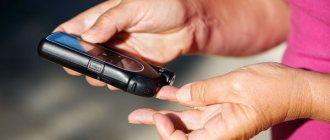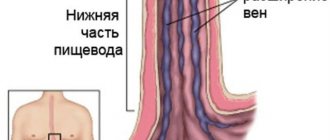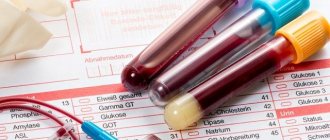Issues discussed in the material:
- How to increase hemoglobin in an elderly person
- How to quickly increase hemoglobin in an elderly person at home
- What medications can increase hemoglobin in an elderly person?
- What foods increase hemoglobin in an elderly person?
Lack of hemoglobin in an elderly person is a painless hematological process. Anemia refers to symptoms or consequences of other diseases. The manifestation of the underlying disease can lead to pathology with specific and characteristic manifestations. The article talks about how to increase hemoglobin in an elderly person.
Hemoglobin norm in elderly women and men
Hemoglobin concentration in older people is affected by gender, living conditions, and age. For example, the norm for hemoglobin in the blood of women is 115–140 g per 1 liter, in men it is 125–150 g per 1 liter.
It is assumed that in an elderly person, the hemoglobin level may fall by approximately 5 g per 1 liter. In this case, patients should not worry too much, as this is a natural process.
A high hemoglobin concentration is the norm for people living in the mountains or experiencing constant physical activity, as well as athletes. A slight increase may occur in heavy smokers.
An important condition for good health and well-being is maintaining normal hemoglobin levels in the blood. Any deviations may lead to unpleasant consequences. At the very beginning of the development of anemia, hemoglobin is reduced slightly for a short period of time. During this period, fatigue, shortness of breath, insomnia appear, the pulse accelerates, and appetite decreases. If abnormalities are found in the analysis, you need to visit a therapist for advice on taking action.
Recommended articles on this topic:
- Features of older people: psychological and physiological
- The main problems of older people and ways to solve them
- Boarding home for the elderly: features and rules of choice
How to increase hemoglobin in an elderly person
There are several ways to increase hemoglobin in the blood of an elderly person, which depend on the type of anemia.
1. For iron deficiency anemia (IDA).
This is the most common type of anemia among older people and a blood test will show:
- the presence of microcytosis and hypochromia of erythrocytes;
- the process of reducing serum iron levels;
- a decrease in ferritin and an increase in the iron-binding function of blood serum, which indicates a deficiency of iron-containing components.
Anemia in an elderly person is determined by the color indicator of the blood, which is calculated using the formula (the hemoglobin indicator is divided by the number of red cells). Its norm is from 0.85 to 1.1. If there is iron deficiency in an elderly person, this value will be below 0.7. Hemoglobin in the cell (standard from 27 to 35 picograms) is also determined by a blood test. The blood is also examined for the percentage of microcytes and the total number of blood cells.
If there are symptoms of hypochromia, studies speak of IDA in an elderly person.
If you need to accurately determine whether there is anemia or not, then the blood serum is examined for the amount of iron. This information needs to be known before therapeutic therapy to increase hemoglobin with iron-containing drugs is prescribed. If the cause of anemia is a lack of vitamin B12 or folic acid, then differential diagnosis is carried out.
It is necessary to begin treatment of the cause that caused the pathology, and not its consequences. This means we need to consider the factors that provoked the process of decreasing hemoglobin in an elderly person. Adjuvant therapy that raises hemoglobin includes iron-containing drugs. However, often due to the impossibility of surgery, this method of treatment is the main one.
There are strict requirements for drugs that increase hemoglobin:
- Contains a large amount of divalent iron.
- The presence of additional components to improve the absorption of metal ions.
- Ease of use (dosage and conditions of administration).
- Not very high cost.
If you take divalent metal fumarate or ferrous sulfate in an amount of 150–300 mg, the iron level will rise. You need to take 1 or 2 tablets during the day with meals.
Side effects may occur when taking this group of drugs. These may be disturbances in the functions of the stomach (nausea, vomiting), intestines (frequent constipation). Sometimes the vascular walls of the veins become inflamed, painful sensations appear behind the sternum, as well as hypotension and allergic reactions.
The level of iron in the blood is increased by adhering to a special diet. For example, meat can be of great benefit: the bioavailability of the metal in it reaches 30%.
2. Anemia due to deficiency of vitamin B12 and folic acid.
If there is a lack of folic acid or vitamin B12 in the human body, a disorder occurs in the cellular synthesis of DNA in the blood. With this type of anemia, red blood cells turn into macrocytes.
Indicative factors:
- Increase in blood color index.
- Presence of megalocytosis.
- Presence of nuclear remains in erythrocytes.
- The presence of leukopenia, thrombocytopenia, reticulocytopenia.
- Raising serum iron levels.
- Development of megaloblastic hematopoiesis in the bone marrow.
- Presence of mental and neurological disorders.
This kind of anemia and hemoglobin deficiency in older people may occur due to:
- progressive atrophic gastritis or malignant tumor in the fundus of the stomach;
- inflammatory processes in the small intestine, gastric surgery;
- the presence of diverticulosis and pancreatitis;
- dysbacteriosis and chronic hepatitis;
- lack of substances necessary for the body;
- improper use of medications.
This type of anemia is more accurately diagnosed after a bone marrow test. But it happens that it is not possible to conduct such a study due to objective reasons. In this situation, the doctor makes empirical conclusions and prescribes a course of vitamin B12 to the elderly patient. To improve the general condition and composition of the blood, you will only need 1 or 2 injections.
If the diagnosis is confirmed, long-term vitamin therapy is carried out. At the beginning of treatment, an elderly person is given injections daily until the hemoglobin level is completely normalized. Then the number of injections is reduced to 1-2 every 30 days. If therapy is not enough, there is a risk of relapse of the disease. For anemia caused by a lack of vitamin B12, folic acid is not prescribed, since there is a high probability of neurological symptoms.
We recommend
“Pneumonia in old age: diagnosis and treatment methods” Read more
Lack of folic acid in the body of an elderly person can cause anemia, very similar to B12 deficiency. However, it is not that common. In addition, the factors that provoke it are different. The causes of this type of anemia:
- the human body experiences constant alcohol intoxication;
- cancer, Ritter's exfoliative dermatitis, destruction of red blood cells - all this leads to increased consumption of folic acid by the body;
- the presence of nutritional deficiency, as well as enteritis, aggravated by malabsorption;
- Anticonvulsant drugs, as well as Methotrescat, Barbiturate, Triamterene, have an adverse effect on the body condition of an elderly person.
If a pensioner has a severe form of the disease due to a significant lack of hemoglobin, he will be prescribed folic acid injections. In other cases, a sick person must take this drug in tablets (the norm is 5 mg per day). If it is impossible to eliminate the factor that provokes anemia (tumor, hemolysis), patients are prescribed a long course of folic acid. In cases where a pensioner has epilepsy, treatment must be carried out very carefully, since neurological symptoms may intensify.
How to increase hemoglobin in an elderly person with diet? It is very useful for anemia to eat:
- meat and meat products (for example, sausages);
- liver, fish;
- eggs (yolks);
- whole grain flour products;
- sunflower seeds, pumpkin and sesame seeds;
- nuts, especially pistachios;
- various greens: spinach leaves, fennel, parsley;
- various types of cabbage and beets;
- black currant;
- wheat germ and sprouts;
- apricots, prunes, figs, dates.
Practical recommendations for increasing hemoglobin:
- Drink 1 cup of fermented yeast for 5 days.
- Pickled beet juice (200 ml per day) is very useful.
- Soups made from bran (wheat or rye) with cream help to normalize hemoglobin levels in older people.
- You need to take 20–25 g of nettle tincture prepared in May every day before bed.
- Apples, carrots (grated), and parsley are also very useful.
- The diet should contain high amounts of protein and low fat.
- Dried apricots, 3-4 pieces per day, help increase hemoglobin. It is not recommended to eat the seeds, as they are poisonous.
- Adhering to a meal schedule (4–5 times a day) has a positive effect on the body. Moreover, breakfast should be more substantial, and dinner should be light.
- Products containing vitamin B1 and any type of whole milk bring invaluable benefits.
With the help of such a diet, you can increase hemoglobin in an elderly person and eliminate the early symptoms of anemia. Modern medicine has special drugs that cure this disease. You can combine drug therapy and treatment with folk remedies. If you strictly follow the recommended recipe and dosage, then natural medicines will provide significant assistance in eliminating the problem. After a month-long treatment course, it is necessary to take a blood test. If the hemoglobin level is insufficient, therapy should be continued.
There are methods that allow you to quickly increase hemoglobin in an elderly person at home.
Here are the most effective:
- Peel the carrots, black radishes, and beets. Wash and grate on a fine grater. Squeeze the juice from the resulting mixture, mix equally and place in the oven for 3 hours. Take 1 tablespoon daily.
- An excellent remedy for raising hemoglobin is a medicinal cocktail. It is necessary to squeeze the juice of pomegranate, apple, carrot, lemon. Mix in a ratio of 2:1:1:1 and add honey (70 g) to the mixture. Then pour the mixture into a jar and leave to infuse for 2 days in the refrigerator. Dosage: 2 tbsp. l. 3 rubles each per day.
- A tincture of meadow clover will help solve the problem. You need to pour 10 g of inflorescences with 1 glass of hot water. Leave the solution to infuse for 45 minutes and then strain. Take 2 tbsp. l. 3 times a day.
- Rosehip can be consumed instead of tea 3 times a day. To prepare it, you need to pour 1 tablespoon of berries with 1 glass of boiling water and let it brew for 8 hours.
- A mixture of currant juice, strawberries, and red rowan in equal proportions is suitable as berry therapy. Drink 100 ml daily, 2 times a day.
- Take garlic tincture three times a day, one medium spoon. To prepare it, peel and chop 300 g of garlic. Pour the mixture with 1 liter of alcohol and leave to infuse for 3 weeks.
Pistachios are record holders for iron content
The record for iron content was set by an unexpected dish - pistachios. 100 g of this tasty product contains about 60 mg of this valuable substance. It is not surprising that regular consumption of pistachios is recommended for people trying to normalize low hemoglobin.
It’s easy to verify this by examining their composition; 100 g of “nuts” contains:
- trace elements (iron, magnesium, phosphorus, copper, potassium, manganese);
- protein (approximately 20 g), supplying valuable amino acids;
- carbohydrates (25 g);
- vitamins A, B (1, 6, 9), E, starch;
- fats (approximately 50 g), providing the fatty acids the body needs, saturated and unsaturated.
Including pistachios in your diet in moderation will not only quickly bring your hemoglobin back to normal. This dish improves the condition of the cardiovascular system and reduces cholesterol. One handful a day is enough to effectively strengthen the immune system, prevent tumors, and “delay” the aging process.
You can eat pistachios not only in their pure form; this healthy product is often used in preparing salads. A recipe beneficial for hemoglobin includes natural suppliers of iron - pomegranate, carrots.
To prepare you will need:
- half a pomegranate;
- small carrots;
- a little sour cream (yogurt);
- sugar (by eye);
- arugula.
The pomegranate is freed from grains and mixed with grated carrots. Sugar and sour cream are added to the mixture, the resulting composition is thoroughly mixed. The pistachios are fried (the pan should be dry). The mixture is laid out on lettuce leaves, and the dish is generously flavored with pistachios on top. This is an example of a healthy pistachio salad with iron-containing products.
For hemoglobin and the state of immune defense, oil prepared from pistachios will also be useful. With its help, you can start cell regeneration, increase vitality, and normalize the functioning of the gastrointestinal tract.










